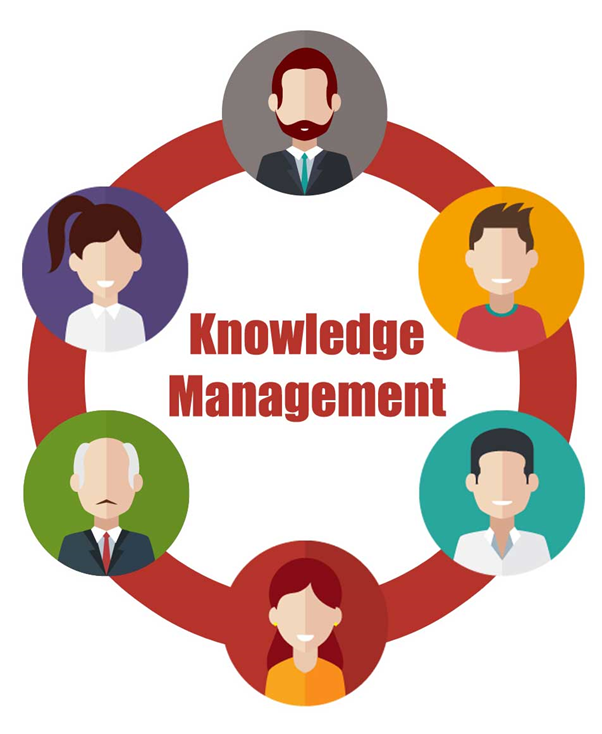Success Stories: Norske Skog Flooring (NSF)
Success Stories: Norske Skog Flooring (NSF)
When Norske Skog Flooring (NSF) created a whole new product category they were worried their staff did not understand its complex benefits or could promote their new product over existing solutions. To solve this, they collaborated with an eLearning company to create their own knowledge management system.
Background
Norske Skog Flooring (NSF) is one of Europe’s largest flooring material manufacturers. Recently their R&D department created a new interlocking flooring system called Alloc. This new flooring product created an efficient and cost-effective flooring option. However, construction, materials and installation process pushed Alloc into a new category of product. NSF were concerned that the market would not understand the advantages of this new product and would need to retrain their sales staff to explain the benefits to the customer.
What did they do?
NSF created a new initiative to train their sales staff in a completely new product line. To do this, they enlisted the help of Scandinavian Celemi’s Launch and Branding division. Celemi specialises in creating learning tools and processes to support the new products and their marketing. Together they employed Celemi’s learning marketing process to create a new online learning tool. This six step learning process creates a welcoming environment for the participant in the following steps:
- Create an interest.
- Supply just enough information (Just in time).
- Provide exercises to allow the processing of knowledge.
- Provide points of conclusion to reinforce sense of achievement.
- Lets users experience how their insights can be applied to the real world scenarios.
- Provide ongoing and continuous follow up.
This new knowledge management system was built of four ‘WorkMarts’. These WorkMarts functioned as online forums for experts, a collection of best practices and advice for new members. Each part functions as an online ‘area’.
- Sales staff work in a virtual store to interact with potential customers and customer examples. Here the sales staff could perfect their methods and learn to deal with a variety of customers. Two of the examples given are the customers of ‘Price is not an issue as long as I get what I want’ and ‘I want it now’ types.
- The second WorkMart was an area for sales staff to interact with the Alloc product. Here the focus was on matching design features with the corresponding benefits. This area was designed to apply what the sales staff had learnt in the previous WorkMart and give a sense of immediate gratification through success.
- This section provides an area for more detailed role-playing opportunities for specific questions that can be asked about the product. The goal of this area was to sharpen the domain knowledge of the sales staff and their sales techniques.
- The final WorkMart allows sales staff to participate in a project installation. This gave the staff the chance to develop better price quotations and understand the process of installation.
What they found?
- The whole process was ranked very highly among sales staff.
- Main points commented on are the novel approach of the training, it was simple and engaging, and it fostered teamwork and knowledge sharing opportunities that increased effectiveness and retention.
- The stores that underwent the Alloc learning program had sales 50% higher that those that did not.
- A major advantage was that NSF did not have to offer traditional bonuses for participation in the program. E.g. monetary or promotional.
- The results were passed along to distributors to encourage continued interest.
Summary
- Norske Skog Flooring’s (NSF) R&D invented a new industry wide product category. They were first to market.
- They were worried their sales staff did not under the benefits of the new product or could promote said benefits to the customers.
- They collaborated with a learning tool specialist company.
- Together they created a knowledge management system to share best practices, industry expert advice, industry statistics and participate in role-playing sales activities.
- Stores that participated have 50% higher sales than stories that did not.
- Hugh learning initiative that didn’t need to use monetary bonuses for their employees to participate.
More information on this case study can be found in Carl Frappaolo's book 'Knowledge Management'.
Great book, a review will be published soon!
Success Stories: BAE Systems
Success Stories: BAE Systems
This is a case study of the BAE systems company and how they shifted their culture to promote knowledge sharing across their global offices and business units. This is a great example of how companies can re-evaluate their culture and the potential actions they can take to make it happen.
Background
BAE Systems is a British aerospace company with civilian and military contracts. They have offices around the world including USA, Canada, Germany, Italy, Saudi Arabia and Australia. During the 1990s BAE management noticed a shift in the contracting market and decided to adapt their company culture to focus on increasing knowledge sharing across their worldwide company to remain competitive in the future. The management was particularly concerned that vast areas of their company operate independently for civilian, military and geographical based contracts.
What did they do?
BAE initially collected over 130 business unit managers into a forum they called Benchmark BAE. Here they asked the unit managers to brainstorm the goals and objectives that would allow BAE to become a more collaborative organisation. Eventually the group decided on 5 objectives which include: -
- People represent BAE’s greatest strength.
- Customers are the number one priority.
- The future of the company lies in partnerships.
- Innovation and technology provide a competitive edge.
- Performance must be measured for continued success.
This core list of objectives was then given out to the majority of the 1500 line managers to discuss and improve upon. With the additions of the line managers, 5 dedicated teams were formed with each to enact one of the objectives listed. The original list of objects, now with each being driven by a team of its own, is now called the ‘Value Plan’.
The second proposal was an evaluation tool for business units and line managers. The ‘BEST’ plan uses an online evaluation tool focused on the 5 aspects of the ‘Value Plan’. Each of the 1500 line managers were also given access to training programs to boast their understanding of how the wider company operates, efficient managerial techniques and leadership skills. The goal was for to support the line managers to achieve the ‘BEST’ plan.
The final aspect of the strategy was the creation of an internal university called the Virtual University (VU). Here the VU combines outside academics and industry leaders to discuss the latest knowledge management research with the goal of implemented best practices throughout the company. The VU is open for any employee and at the end of its first year, a regular session had over 140 in person participants and over 1400 online contributors. The VU also won the US Corporate Xchange Excellence award with the support of the financial times for its innovative approach to continuous learning.
What they found?
This knowledge sharing initiative found some interesting key points:-
- Over 80 percent of their employees spend over 30 minutes a day searching for information.
- Over 60 percent spent over an hour duplicating the work of other employees each day.
- Evidence of significant savings through the program.
“We discovered engineers working, in different parts of the country - on the same wing construction issue - but in very different areas, a military aircraft and an airbus. One group took the step to establish best practice, which was transferred to another plan in another geographical location with multi-million pound savings.”
Summary
- BAE, a civilian and military aerospace contractor, re-evaluated their knowledge sharing culture.
- Gathered key business managers to form a set of company wide objectives and values.
- Created a team for each goal to promote it throughout the company.
- Provided inclusive training to line managers to help them understand their position in the company and to promote cooperation.
- Created an award-winning internal university to push knowledge management techniques and best practices.
More information on this case study can be found in Carl Frappaolo's book 'Knowledge Management'.
Great book, a review will be published soon!
Expert panels and how to host one.
Expert panels and how to host one.
Expert panels are basically question and answer sessions with experts in a certain area. All you need is a small group of experts willing to answer questions about their area and a group of interested people to form the audience. The goal of this is to create an interesting discussion going between the experts, motivated by the questions from the audience. Remember panel is for the benefit of the audience, so a moderator is key to keep the discussion on track and within the skill set of the audience.
Have a look below for a more detailed description of how to how you own expert panel.
How to host you own Expert Panel
Time: 30-60mins People: 1 Moderator 2-4 Executives 8 – 20 Audience Equipment: Open room, chairs Expenses: Free Process:
- Select a discussion topic. It is generally advised to stick to a theme or central question. You could either use a prechosen topic or ask for suggestions of topics beforehand. Note: this should be done well in advance as it might affect your choice of expert.
- Select a moderator. The person will move the conversation forward and deal with questions and keep to the time frame.
- Select 2 - 4 experts to be a part of the panel.
- Either select or allow participants to sign up for the audience. Try to keep the numbers limited to 8-20. Too few, other strategies will be more helpful and to many it might put the experts at a disadvantage.
- Find an open space you can use. You want something warm and inviting. A class room setting would be best. Avoid communal areas and larger auditoriums. The idea is to get all of the audience asking questions.
- Set the time and the place. Give everyone an itinerary of what will be discussed.
- Once everyone is seated, have the moderator begin with a small introduction of the topic.
- Have the experts introduce themselves.
- The moderator asks the first question. Either present it to the group or pick out an executive to ask.
- The moderator should allow the discussion to develop naturally, only stepping in to keep the questions going or to ask an executive who is quite for their answer.
- Allow participants to ask questions. It is up to the moderator to choice how many questions are asked.
Here is a small list of discussion topics you can use:
Leadership skills
Client handling
Hardest part of your day
Supplier relationships
Management trends
Going a step further.
- Deescalate the whole process. Give everyone food and drinks. Keep everyone on the same level. The whole point is an informal look into the experts’ attitudes and mindsets.
- Be proactive with choosing topics. Hold a survey or voting for the topics. Try and find out what people really want to know.
- Tailor questions to each expert. For example, ask how a recent problem at work was overcome or how the latest sales figures where reached.
- Encourage the expert beforehand to give praise to areas and individuals of the company.
- Don’t make it a speech about how to do things better. Prompt conflicting opinions in strategies.
- You don’t want it too sound rehearsed.
What Is Knowledge Management?
What Is Knowledge Management?
Knowledge Management (KM) is a set of strategies used by companies to create, capture and transfer knowledge between their employees. These strategies can include a vast array of strategies, processes and technologies. These strategies can be grouped into two sides of KM. This includes the process side and the technology side. The processes side includes all employee focused strategies, for example: 1) Changing company knowledge sharing culture 2) Using knowledge cafes 3) The support of management 4) Incentives to share knowledge etc. This is should work in tandem with the technology side to work to the same goals. These include technologies such as: 1) Wikis 2) Corporate blogs 3) Document managers 4) Yellow pages to find in house experts 5) Lesson learned databases etc.
Where to begin?
KM starts where the knowledge is… the people! Every good KM initiative starts with the people of the company and then moves onto the more complex strategies and technologies later.

Everyone has something to contribute. Employees know more than they can write down on their resumes and they should not be taken for granted. This means that KM should have the ability to allow every employee to contribute knowledge.

Everyone is an expert at something. This is also referred to as being an expert in context. This means that lower levels employees will have a better understanding of common processes than senior employees. KM should have the ability to take knowledge evenly from employees at all levels and not just those with the most experience.
Which technologies to use. Once a company has created effective KM processes they can then begin to look into technologies that will complements their processes. This will differ from each company and depend on their strategies. Technologies should only be chosen if they directly benefit a core processes. For further information on how to implement a KM strategy, see (Link soon).
After implementing basic processes and technologies you have created a knowledge network!

Challenges to KM
Sounded easy right? Well there are a lot of challenges that come with KM that need to be addressed before you can start seeing the real benefits. Below is a small list of the most common challenges that effect every KM initiative. It is a good start if you can answer all of these questions BEFORE you start KM!
How do people join the network?
- Can a new employee join the network easily?
- Do you accept new knowledge and ideas?
- How easy is it to learn the new processes?
What happens when people leave the network?
- But what about if someone leaves the company?
- What happens to their knowledge?
- Have you successfully captured their knowledge?
- Do they still have access to you KM network?
What happens if some people aren't sharing?
- What if an employee doesn’t want to share their knowledge?
- What if an employee doesn’t see the value of KM?
- How can you motivate your employees?
- Do your employees feel that if they share, will they lose their advantages?
Summary
At its core, Knowledge Management (KM) is a strategy to help transfer knowledge between employees to create value for a company. This strategy is built from a range of processes and technologies that contribute to one broad vision of KM. If the challenges of KM can be mitigated, a company can see real value for the benefit of the employees and the company as a whole. This is just the tip of the ice beg that is KM, explore the rest of this blog to find out more and to get the most out of your new KM strategy.

What is a Knowledge Management System (KMS)?
What is a Knowledge Management System (KMS)?
A traditional Knowledge Management System (KMS) is a technology that helps the creation, capture and transfer of knowledge. This can exist in many forms and will differ heavily between each company. Due to the variety of KMSs, the definition is often used very loosely.
The use of a KMS is tied to the current Knowledge management (KM) strategies used by the company. This will define the KMS type and how it is used. For example, if a company invests in social and person-to-person KM strategies, then any KMS will function in a support capacity (e.g. video chatting). Technology examples:
- Corporate blogs
- Company wiki
- Video chat
- Collaborative technologies
- Lesson learned databases
- Document management systems
- Expert information systems
- Some forms of corporate social media
Benefits of a KMS:
The benefits of a KMS are almost as numerous and varied as the benefits of a KM strategy. A better way to think about it is how does this KMS benefit my KM strategy. You can see the benefits of a KMS by examining its target goals.
Knowledge Creation
This is where the knowledge is created on the system and is not captured from a certain individual. Think online chat rooms. These systems basically provide new avenues for knowledge creation. This is done by providing uncommon resources, access to new individuals or collaborative processes. Knowledge creation is always a bonus for the company, with the exception of time wasting activities.
Knowledge Capture
This is the capture of knowledge for the use of team members and new hires. This is often seen as the primary goal of KM. In the KMS context this would be data captured from employees for future use. KMSs are normally judged on the ability capture new knowledge.
Knowledge Transfer
This is the use of knowledge for team members and new hires. By retaining knowledge in a technical system, it puts less pressure on existing employees to mentor each new arrival. While the system could never replace an employee, it does provide a valuable starting point or reference structure to bridge knowledge levels. These benefits are the easiest to quantify: employee performance, training time, problem solution times, etc.
It is important to note that a KMS by itself is not a KM strategy!
What success looks like:
A successful KMS will operate in the background of employee focused processes and will support the KM strategies being used. For example, take a project team that uses a corporate (team level) blog with a document management system. The knowledge management (KM) strategies used are weekly knowledge cafes, outsider inputs, role reversals and promoting a sharing culture.
(See the strategies of KM section for more details)
As the team progresses through the project and completes the above KM activities, they can update and create new entries for the blog, while adding new documentation and master templates for future use.
While these team processes help create, capture and transfer knowledge, the KMS provides central documentation for team members and outside entities. This simple KMS will know allow the sharing of knowledge through quantified information and resources. The advantages of this example will be seen in knowledge retention rates, the training of new employees, management oversight and the sharing of knowledge among other project teams.
Potential failures:
When a KMS fails, it rarely has anything to do with its technical operation. This means that the technology itself functionally operates but fails to satisfy its purpose to help the capture, transfer and creation of knowledge. A KMS will be at risk of failure from a range of reasons, lets explore this by using the example of a lessons learned database. These failure points include:
- Low user involvement
Even the best KMS system will be considered a failure if no one uses it! This will be tied to a lack of employee incentives, poor user experiences or a perceived lack of value in its use.
- Ineffective knowledge capture processes
This may occur when employees are required to write down lessons learned at the end of a project. This may sound useful but in long-term projects, team members may have either forgotten the details of key lessons or lack the incentives to write meaningful explanations to the context of this lesson.
- Incorrect usage of the KMS
This is often the problem when the designers or project champions of a KMS fail to adequately explain the purpose of a KMS and is the used in alternate ways. For a simple example, project members may only update the database with soft skills learnt when management wanted new technical lessons learnt.
Summary
A KMS can exist in multiple forms but is generally referred to as the technical system that supports KM strategies. Due to the vagueness and poorly understood definitions of KM, managers can see the benefits of KM but don’t know how to achieve them. This normally presents itself when a manager invests in a KMS but does not know how to deploy it properly. Without employee focused strategies, the KMS will be under used and will likely fail.
As you can see from above, a KMS can fail for a large number of reasons before you even get to the technical side. The KMS is not the primary actor in Knowledge Management (KM), it supports the key strategies and if done right, it can benefit the company immensely.


